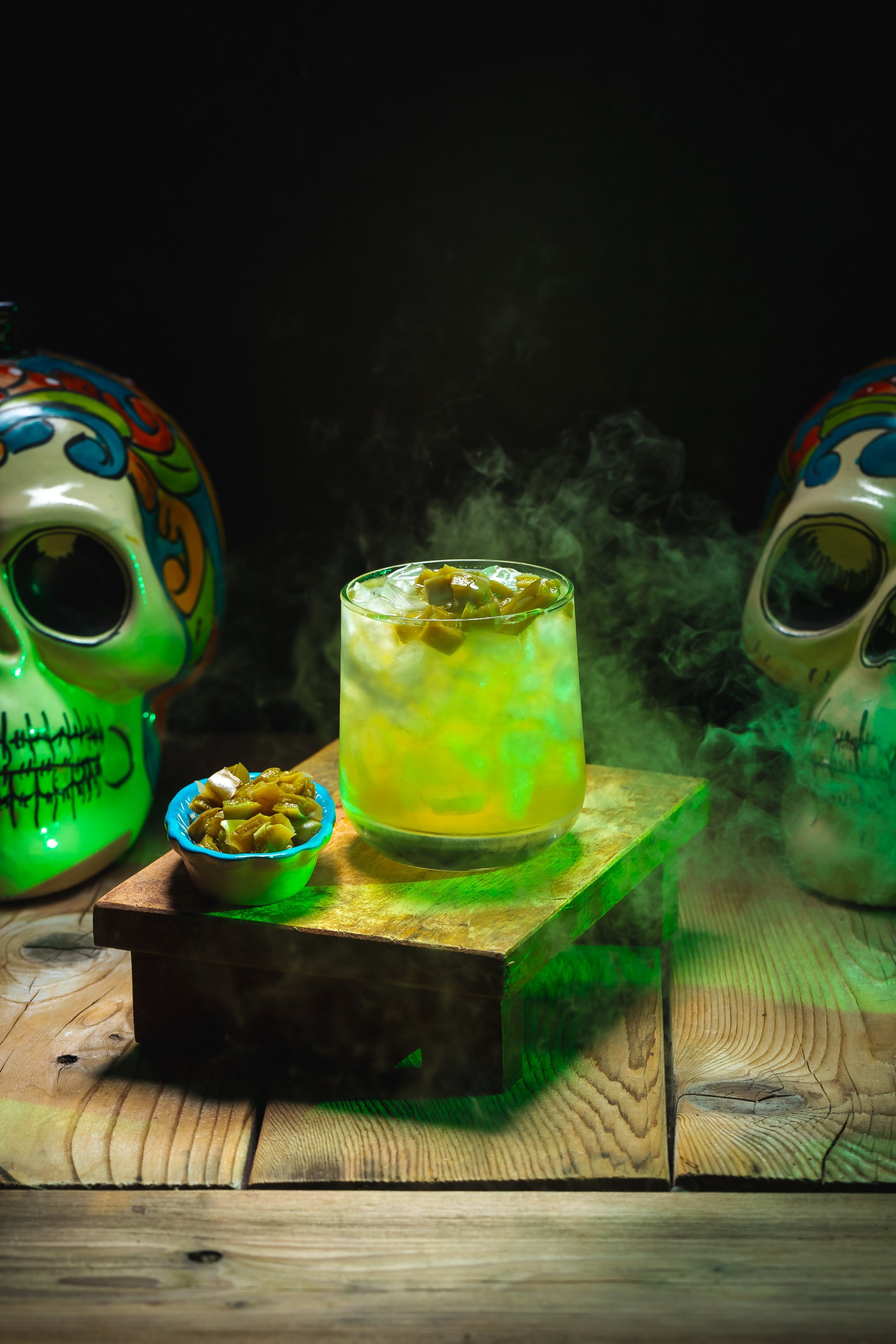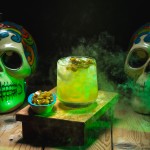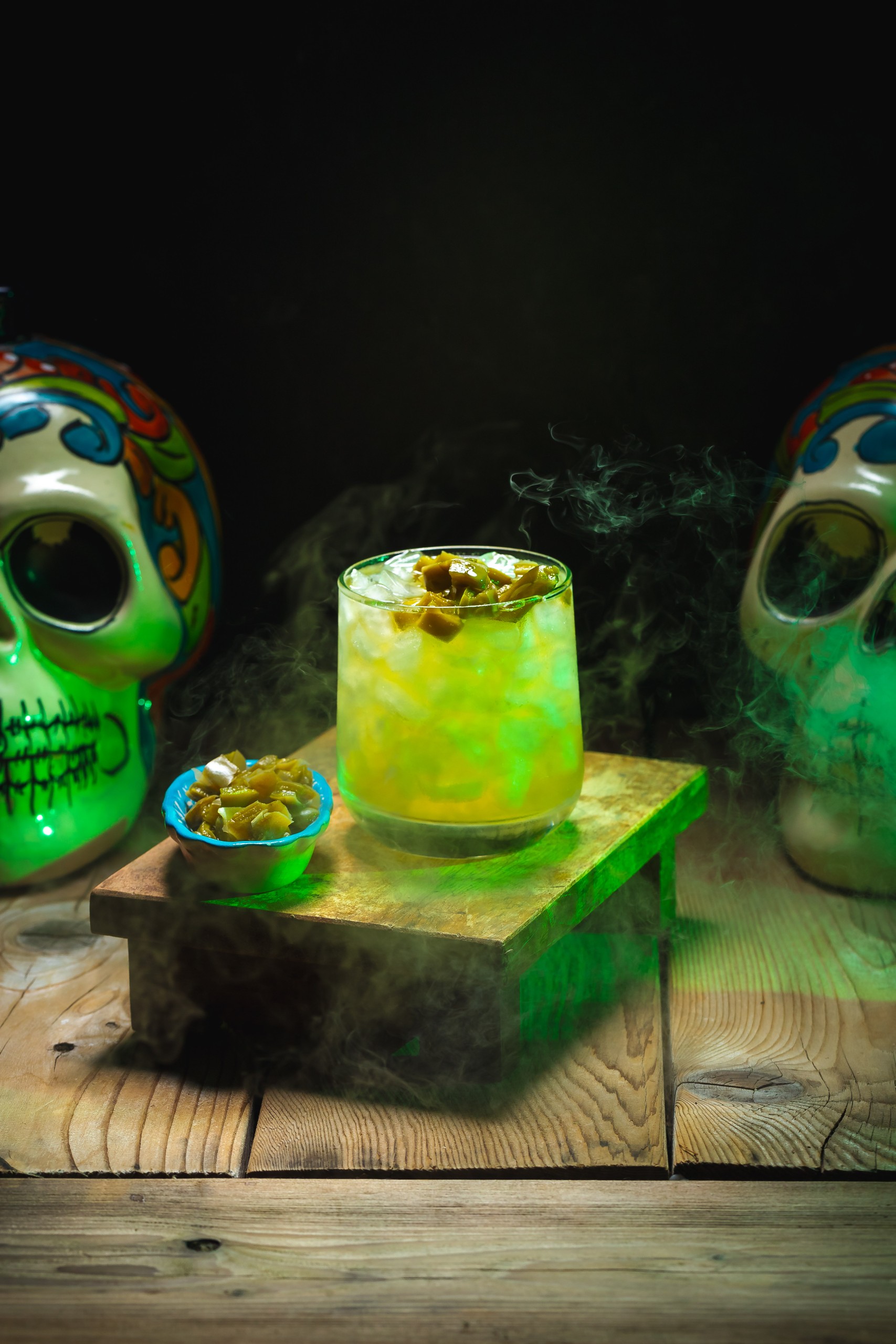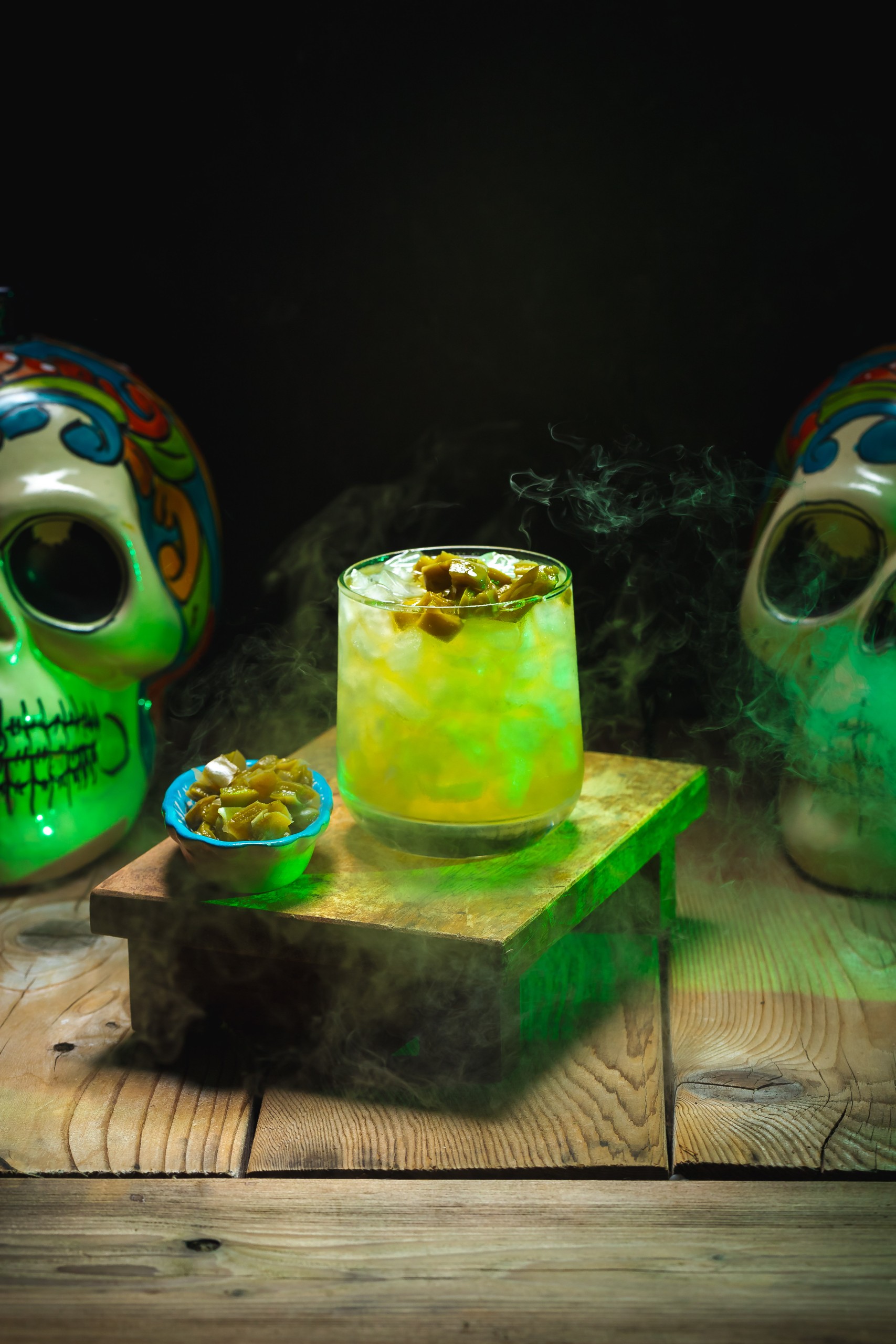The El Muerto cocktail is a nod to the legendary El Muerto that haunts the South Texas brush country made of bourbon, nopal honey syrup and lemon juice.
Jump to Recipe

If you are a fan of local Texas legends, then it’s likely you have heard the story of El Muerto that haunts the South Texas brush country.
The El Muerto cocktail is a nod to this local Texas tale. A twist on the whiskey sour made of bourbon, nopal honey syrup and lemon juice.
In 1850, a man known simply as Vidal was busy rustling cattle all over South Texas, and soon he had a high price on his head – “dead or alive.” During that summer, Vidal took advantage of a Comanche raid which pulled most of the men northward to fight off the attack. In the meantime, the sparse settlements were temporarily left unguarded. Vidal, along with three of his henchmen, wasted no time in taking advantage of the situation and gathered up a considerable number of horses on the San Antonio River, heading southwest toward Mexico.
What Vidal didn’t know was that, among the stolen herd, were several prized mustangs belonging to Texas Ranger Creed Taylor, usually one of the first to defend the settlements against Indian attacks, had not, on this occasion, gone after the Comanche. Creed’s ranch lay west of San Antonio, in the thickest of bandit territory, not far from the headwaters of the Nueces River. Due to the location of the ranch, Taylor’s livestock and horses were often the targets of the many bandits.
Taylor had enough and quickly gathered fellow ranger, Big Foot Wallace, and a nearby rancher by the name of Flores. Both Wallace and Taylor were as skilled as any Comanche when tracking and the three men shortly found the trail of Vidal and his henchmen.
When the three men found the outlaw camp, they waited until night when the bandits were sleeping to attack. Catching them unaware the thieves were killed. But just killing them was not enough. Taylor and Wallace wanted to set an example that would deter future bandits. In those days, stealing cattle and horses was a crime more serious than murder. The Rangers had tried all types of brutal justice including stringing them up in trees and left hanging, shooting them, and chopping them to pieces, leaving their bodies for animal bait. But nothing had worked to stop the outlaws.
In a dramatic example of frontier justice, Wallace beheaded Vidal then lashed him firmly into a saddle on the back of a wild mustang. Tying the outlaw’s hands to the pommel and securing the torso to hold him upright, Big Foot then attached Vidal’s head and sombrero to the saddle with a long strip of rawhide. He then turned the bucking horse loose to wander the Texas hills with its terrible burden on his back.
Soon, stories began to abound about the headless rider seen usually in remote country, with its sombreroed head swinging back and forth to the rhythm of horse’s gallop.
As time went on, more and more cowboys spotted the dark horse with its fearsome cargo, and not knowing what it was they riddled it with bullets. But the horse and its rider rode on and the legend of El Muerto, the headless one, began. Soon, the South Texas brush country became a place to avoid as El Muerto was credited with all kinds of evil and misfortune.
Finally, a posse of local ranchers captured the wild pony at a watering hole near the tiny community of Ben Bolt just south of Alice, Texas. Still strapped firmly on its back was the dried-up corpse of Vidal, now riddled by scores of bullet holes and Indian arrows. The body was buried in an unmarked grave near Ben Bolt, and the horse was free of its burden at last.
That should have been the end of El Muerto, but the legend would live on to this day. Soon after Vidal’s body was laid to rest, soldiers at Fort Inge (present-day Uvalde) began to see the headless rider. Travelers and ranchers in “No Man’s Land” also reported continuing to see the apparition.
In 1917, a couple traveling by covered wagon to San Diego, Texas camped for the night outside of town. They would report the next day that as they sat by the campfire a large gray stallion sped by with a headless man shouting “It is mine. It is all mine.”
Another sighting of the headless wonder was reported near Freer, Texas in 1969.
The legend lives on and still today, many people report seeing the headless rider galloping through the mesquite on clear and moonlit nights in South Texas.
If you love this cocktail check out my Donkey Lady Cocktail:
If you cannot find nopal pads you can use fresh chopped nopales.

- For Nopal Honey Syrup
- 2 nopal paddles spines removed and diced
- 2 cups water
- 1/2 cup honey
- For Cocktail:
- 2 ounces bourbon
- 1 ounce fresh lemon juice
- 1 ounce nopal honey syrup
- For the garnish: nopales
-
For nopal honey syrup: In a saucepan combine nopales and water, bring to a boil. Reduce heat add honey and honey, simmer for 5 minutes. Remove from heat and let steep for an hour. Strain, keep diced nopales to garnish cocktails, if desired.
-
To a cocktail shaker filled with ice. Add the bourbon, lemon juice, and nopal honey syrup.
-
Shake well.
-
Strain into glass filled with ice, garnish with nopales.
Notes: Nopal honey Syrup can be made in advance. Will keep in the fridge for up to one week.



Leave a Reply